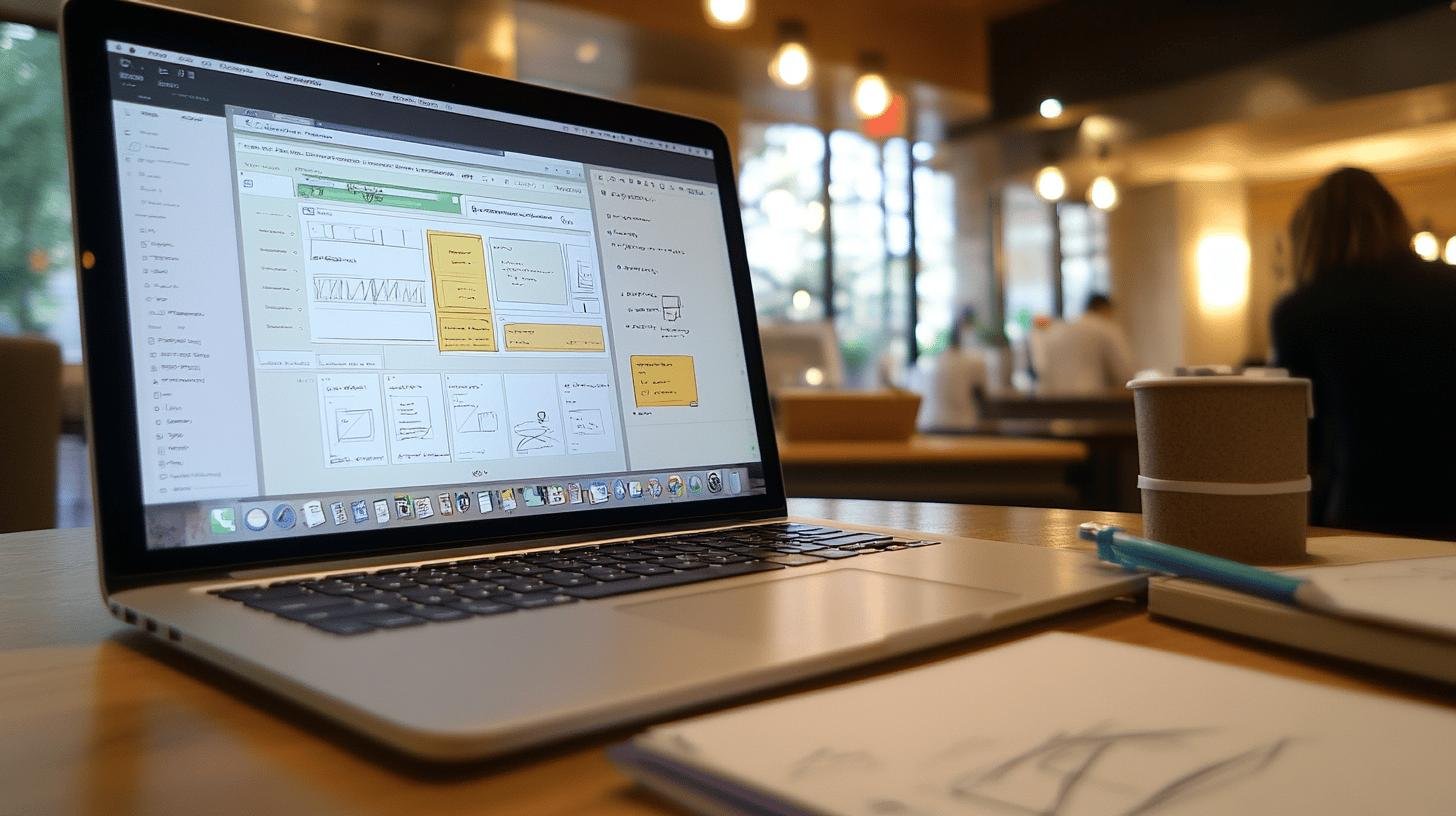Have you ever considered creating a quick prototype for your app? It sounds more like sci-fi, doesn’t it? But now that AI tools have made it possible, it’s a game-changer! Imagine using no coding at all to transform a straightforward text prompt into an elegant desktop or mobile experience. Galileo, one of the AI technologies that are making this easier than ever, is always improving. Thus, you’ve come to the right spot if you are interested in learning how to use AI to construct a prototype. Let’s explore the methods and resources that will enable you to realize your concepts and how to create a prototype using AI tools!
Understanding AI Tools for Prototype Creation
AI tools are like magic wands for designers. They turn simple text prompts into complete user interfaces (UIs) for apps. Imagine typing “Create a login screen with a username and password field,” and—voila!—a design appears. Tools like Galileo make design faster and less laborious. They let you skip tedious steps to focus on creating something amazing.
Here’s a quick list of notable AI tools shaking up the prototyping scene:
- Galileo: Transforms text into sleek UI designs.
- Claude: Generates project concepts and requirements.
- UX Pilot: Creates detailed diagrams and wireframes.
- FigJam: Facilitates collaborative brainstorming and sketching.
- Visily: Converts wireframes into polished UI designs.
These tools don’t just speed things up; they make design accessible to all, even non-techies. By automating manual tasks, they free up more time for creativity. If you want to boost productivity and unleash your inner designer, these AI tools can be your new best friends.
Step-by-Step Guide to Creating a Prototype Using AI

Generative AI tools act like a creative assistant, helping you whip up prototypes swiftly. No tech genius needed! Imagine seeing your idea come to life in just 30 minutes. Here’s a step-by-step guide.
Ideation and Conceptualization
Start by using AI to brainstorm ideas and requirements. Tools like Claude excel in generating project concepts.
- Action Tip: Enter a broad idea and let AI refine it into detailed requirements.
- Pro Tip: Use Claude to compare multiple ideas side-by-side.
Designing Wireframes
Sketch your ideas using wireframes with UX Pilot and FigJam. They help create detailed diagrams of your design.
- Action Tip: Begin with a rough sketch and polish it into a complete wireframe.
- Pro Tip: Collaborate with teammates in FigJam for brainstorming and refining ideas.
UI Design and Prototyping
Transform wireframes into polished UI designs with Visily. It allows converting screenshots into editable designs.
- Action Tip: Use Visily’s screenshot-to-design feature for quick UI creation.
- Pro Tip: Focus on one section at a time to manage the process better.
Testing and Iteration
Test your prototype and gather feedback. This step is vital for making adjustments to meet user needs.
- Action Tip: Run user tests to observe interactions with your prototype.
- Pro Tip: Utilize feedback for small tweaks to enhance the design continuously.
Following these steps, you can make prototypes that are fast, efficient, and user-friendly. Try it out! 😊
Benefits of AI-Driven Prototyping
AI-driven prototyping enhances efficiency, turning ideas into reality with less manual work. It’s accessible to all—even non-techies—and aids from idea generation to final tweaks. If you want to expedite your design process, AI is your ally.
| Benefit | Description |
|————–|—————————————————————————|
| Efficiency | Accelerates design, reducing time from idea to prototype. |
| Accessibility| Expands tool availability to more users.
| Innovation | Sparks new ideas by automating repetitive tasks. |
| Creativity | Frees designers to focus on creative aspects. |
AI tools enable rapid iteration, letting you test and refine designs quickly. This experimentation leads to better solutions. If innovation is your goal, AI tools are worth exploring! 😊
AI Tools for Prototype Testing and Validation

AI tools simulate user interactions with your prototype. They help spot issues before real users do. These tools mimic clicks, swipes, and voice commands, previewing your design’s performance.
Testing gathers insights and enhances your prototype. AI tools simplify this by collecting data from simulated tests. Imagine a report highlighting user pain points and favored features. This information is crucial for refining the design to meet user needs.
Once feedback is collected, AI tools analyze it. They uncover patterns you might miss, ensuring your prototype meets user expectations. By refining based on AI-driven feedback, you can create prototypes that look and work great!
Future Trends in AI Prototyping
AI prototyping tools are rapidly evolving. Soon, they may craft designs rivaling those from top designers. AI can already create impressive designs with minimal input, and it continues to improve.
Here are some expected AI prototyping trends:
- Increased automation: AI will handle repetitive tasks, freeing time for creativity.
- Enhanced collaboration: AI tools will improve team collaboration for idea sharing.
- Improved design accuracy: AI will reduce errors, aligning designs more closely with user needs.
These advancements mean less manual work for designers, who can focus on innovation. AI will partner in the design process, accelerating idea realization with greater precision. This transformation will make prototyping more dynamic and exciting!
Final Words
Jumping into the world of AI tools for prototypes? It packs quite the punch. Tools like Galileo are showing just how far AI design has come. We’ve explored everything from transforming text into interfaces to using Visily for quick UI designs. Generative AI is making it easy, even if tech isn’t your strong suit.
Using AI-driven prototyping is like giving creativity a turbo boost. The benefits touch efficiency, innovation, and accessibility. Testing with AI means you don’t just create; you refine.
And when it comes to future trends, the sky’s the limit. Knowing how to create a prototype using AI tools can open doors to amazing design possibilities! 🚀
FAQ
How do I create a prototype using AI tools for free?
AI tools like Galileo or Mockitt AI can help you make prototypes without spending a dime. Start by outlining your idea and using these platforms to generate designs from text prompts.
What is an AI prototype generator or image generator?
AI prototypes or image generators transform ideas into visual designs. They rely on AI to create interactive models of your concept, streamlining the design process with minimal manual effort.
How do I design and test a prototype using AI tools?
You can create a prototype by using tools like FigJam for wireframes and Visily for UI design. Test it with AI-driven insights to refine your design for a better user experience.
What is a prototype in artificial intelligence?
In AI, a prototype is a preliminary design or model created to test and validate ideas. It’s a mock-up that helps visualize a concept before full-scale development.
How to use AI for creating visuals?
AI tools like Visily turn your sketches and ideas into polished visuals quickly. Just input your requirements, and the AI generates stunning visuals, ready for feedback and iteration.
How do you make your own prototype with AI?
Start with generating ideas using Claude, design wireframes with FigJam, and convert them into a UI using Visily. Test your prototype, iterate based on feedback, and refine your design.




